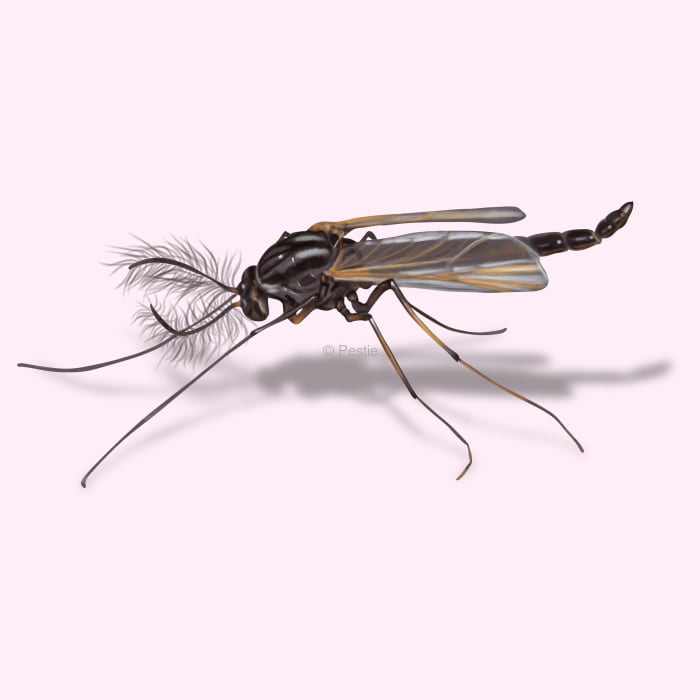How to identify and get rid of midges

Invisible biters: how to keep biting midges away from you and your home
If you’ve ever spent time outside near a swamp, marsh, or slow-draining area, then you may have felt a sharp bite and looked in vain for the culprit.
You likely were the victim of a midge bite!
Midges is a common name for several species of flies, some that bite and some that don’t. This article will focus on the biting midges that can be painfully annoying in and around your home.
How to identify midges
If you happen to catch one and see it up close, you’ll notice these characteristics:
- Gray coloring
- Segmented antennae
- Reddish color when filled with blood
Other than that, the other indicator of a biting midge is a sharp bite sensation, later followed by a red lesion on the skin that intensely itches.
How big are midges?
Biting midges are tiny flies that are extremely hard to see. That’s why many people call them no-see-ums. Midges range from 1/16-1/8 inch.
What other pests look like a midge?
Mosquitoes, gnats, fruit flies, or other non-biting midges are often misidentified as biting midges. Biting midges don’t have a long straw-like mouthpart like mosquitos or long legs. Additionally, they are rarely seen due to their small size.
Where do midges live?
Midges live all over the world in temperate and tropical regions. They are usually associated with swamps or marshes, as their larvae need to be in moist soil. While they can survive in stagnant or slow-moving water, they don’t have to be submersed in water to grow. All they need is constant moisture to develop into adults.
How to get rid of midges
Midges can be very hard to control around your home, but there are some things you can do to reduce their numbers and deter them from biting you or getting into your home.
Here are a few prevention tips:
- Reduce stagnant water
- Drain marshy or wet areas of your property
- Clean out gutters
- Don’t overwater flower pots
If you have a problem with biting midges around your home, follow these suggestions:
- Use small mesh window screens to keep midges out
- Turn up the A/C – Midges don’t like cold temperatures
One of the best ways to prevent midges from coming into your home is by spraying and maintaining a bug-barrier. Pestie offers a DIY solution to protect your home with our pro-grade products that are easy and fast to apply.
Treat midges with Pestie
If you're still having trouble keeping midges away, the best option is to use a pro-grade, effective pest control solution like Pestie.
Pestie is a do-it-yourself pest control solution that's specially designed to keep midges and other pests away from your home.
With Pestie, you can rest easy knowing that your living space is protected and free of creepy crawlies. And the best part? It's designed for people, pets, and the planet, so you can say goodbye to harsh chemicals and hello to peace of mind!
- Save hundreds compared to traditional annual pest plans
- People, pet, and planet-friendly
- Pro-grade customized formulas
Quick facts
How dangerous are Midges?
Medium danger risk
Biting midges live up to their name because they hurt when they bite! While biting midges in subtropical and tropical climates can transmit parasitic worms, here in the US, no known midges transmit diseases to humans.
- Scientific name
Family - Nematoceran Diptera
- Other common names
Non-biting Midges, Ceratopogonidae, Chironomidae
- Colors
Gray, reddish when filled with blood
- Life span
2-7 weeks
- Diet
Adults feed on flower nectar and plant sap, and females feed on blood to develop eggs
Male and female midges feed on flower nectar and plant sap for their entire lives, but it’s only the females that suck blood to get enough protein to develop their eggs.








